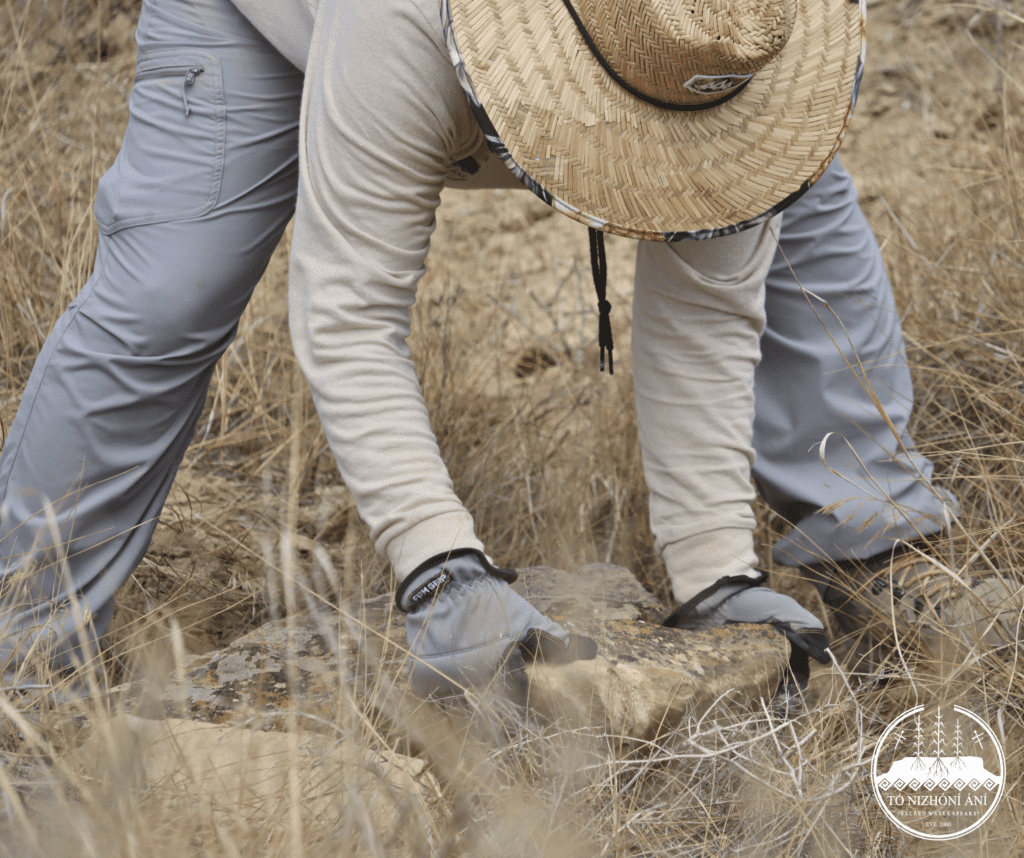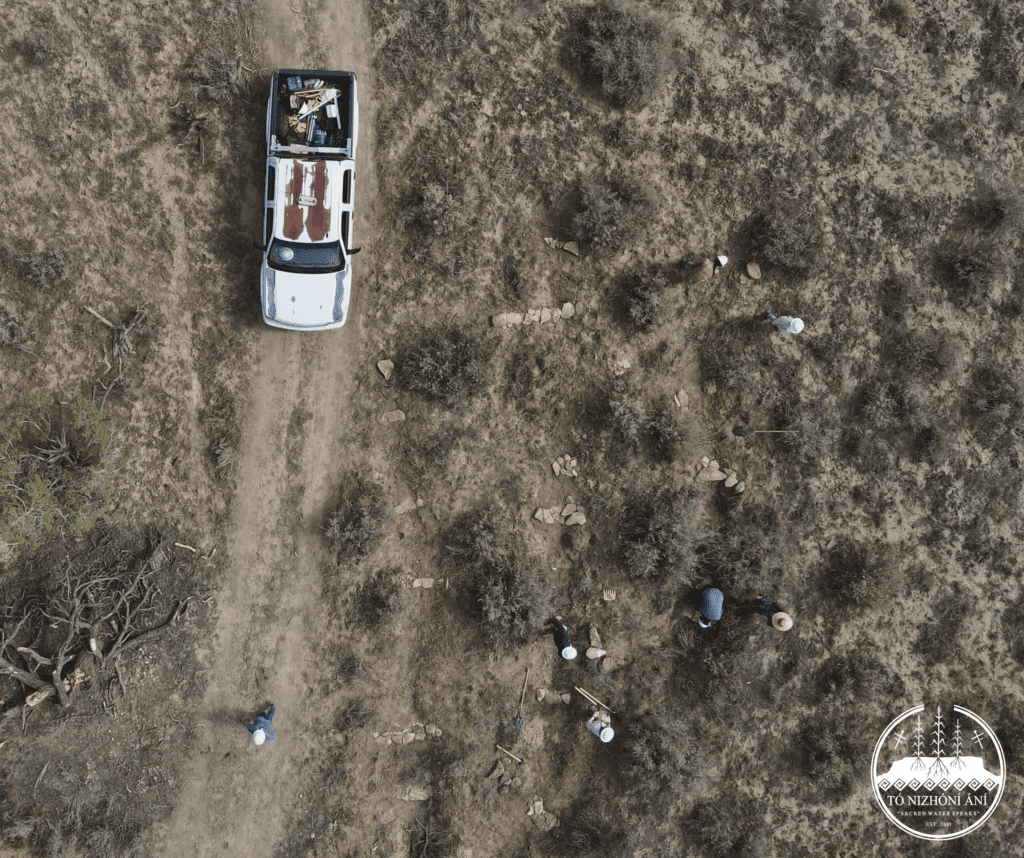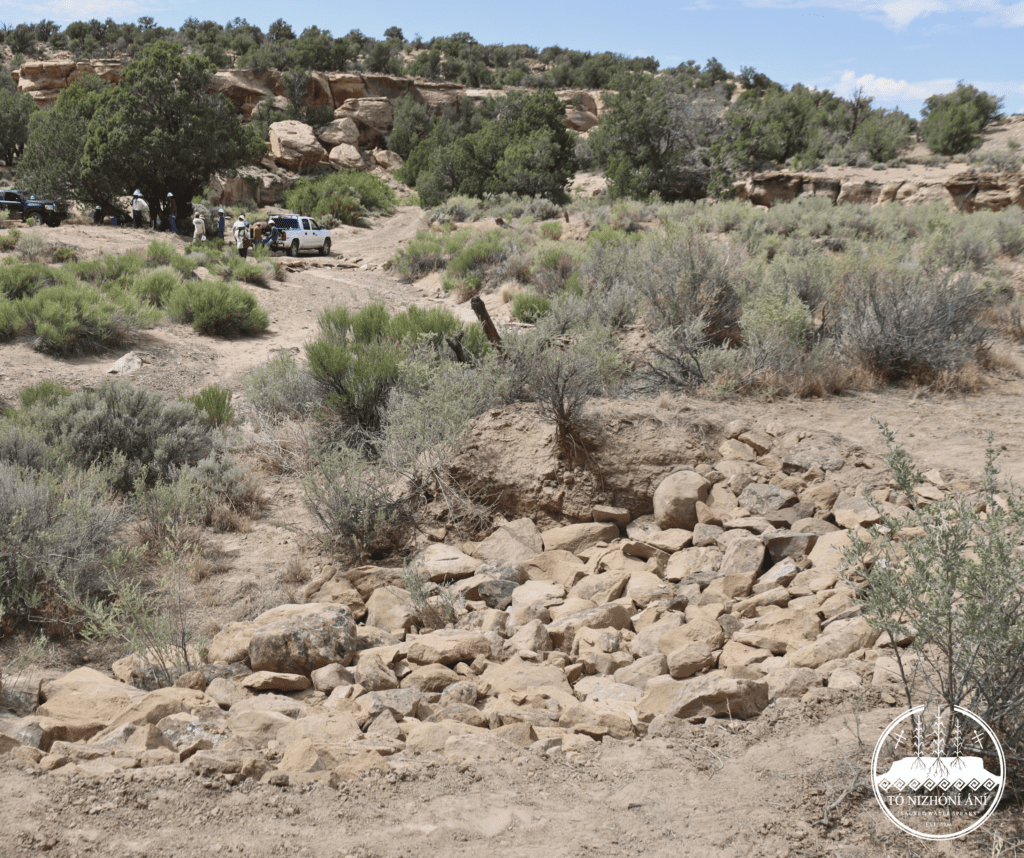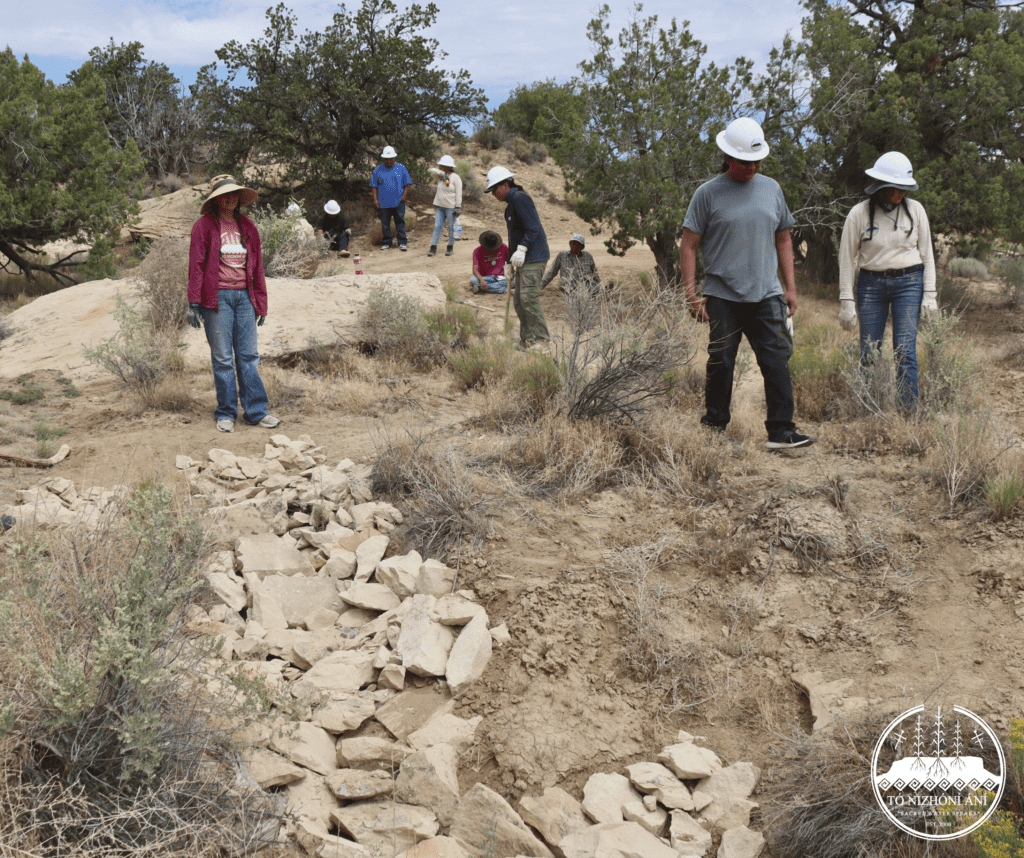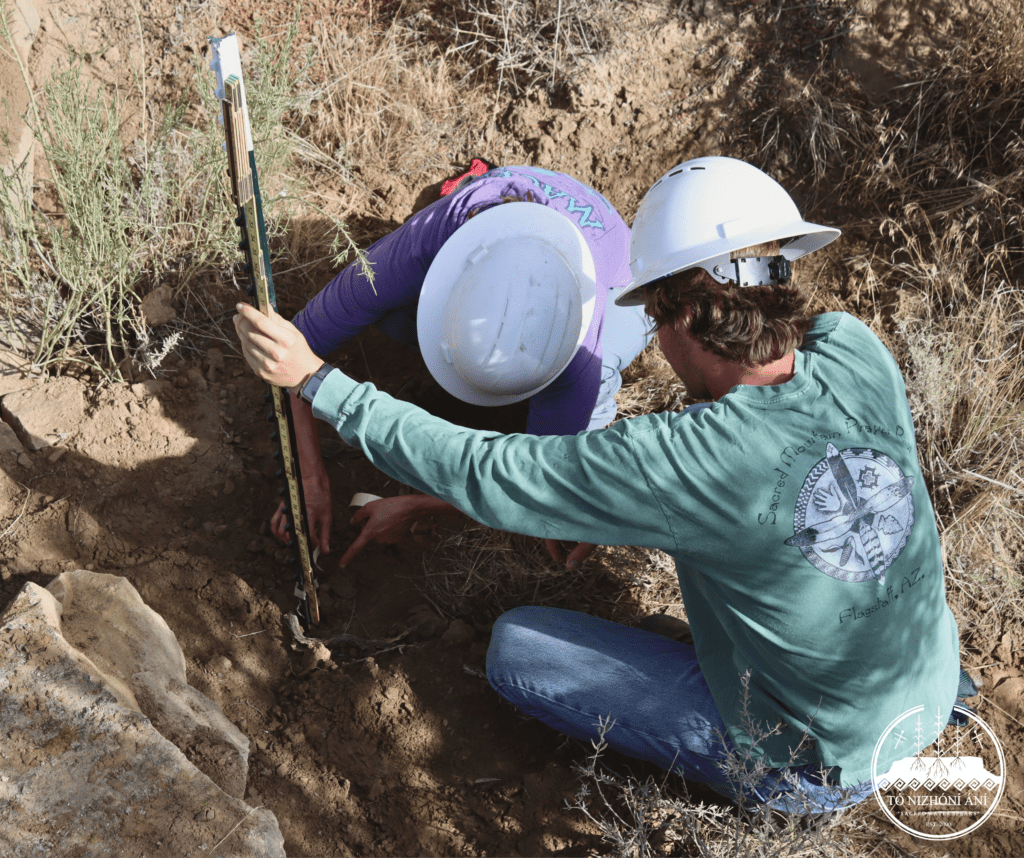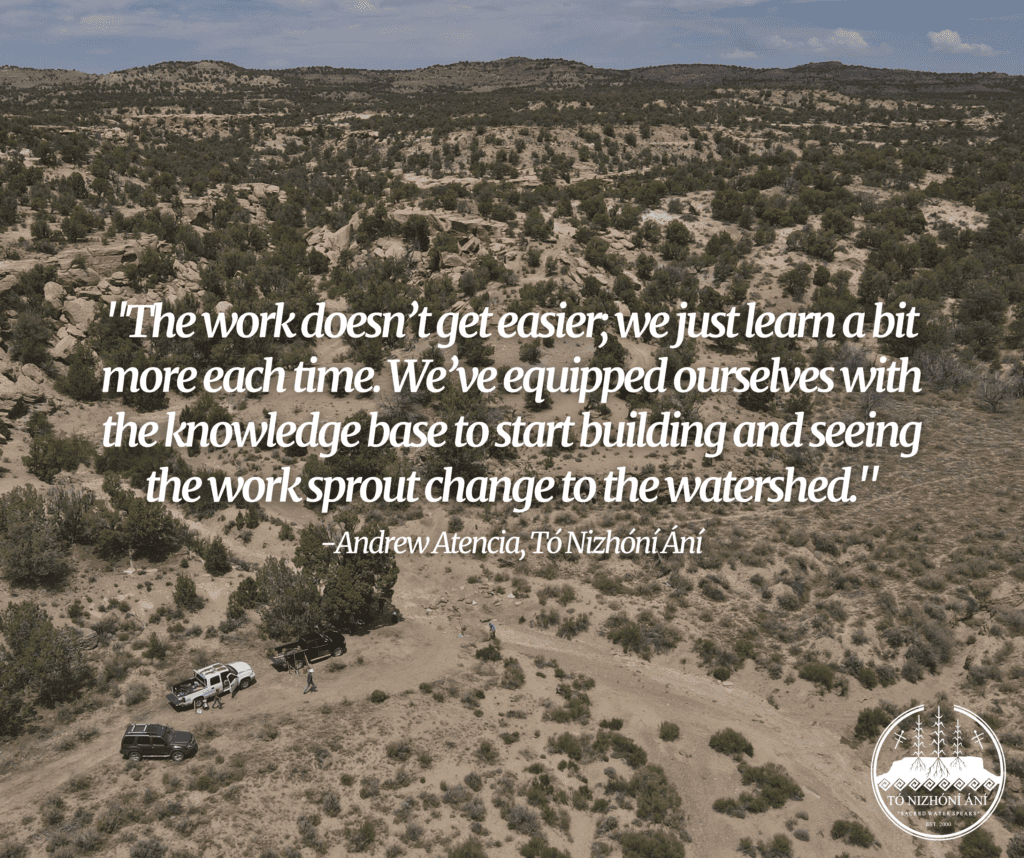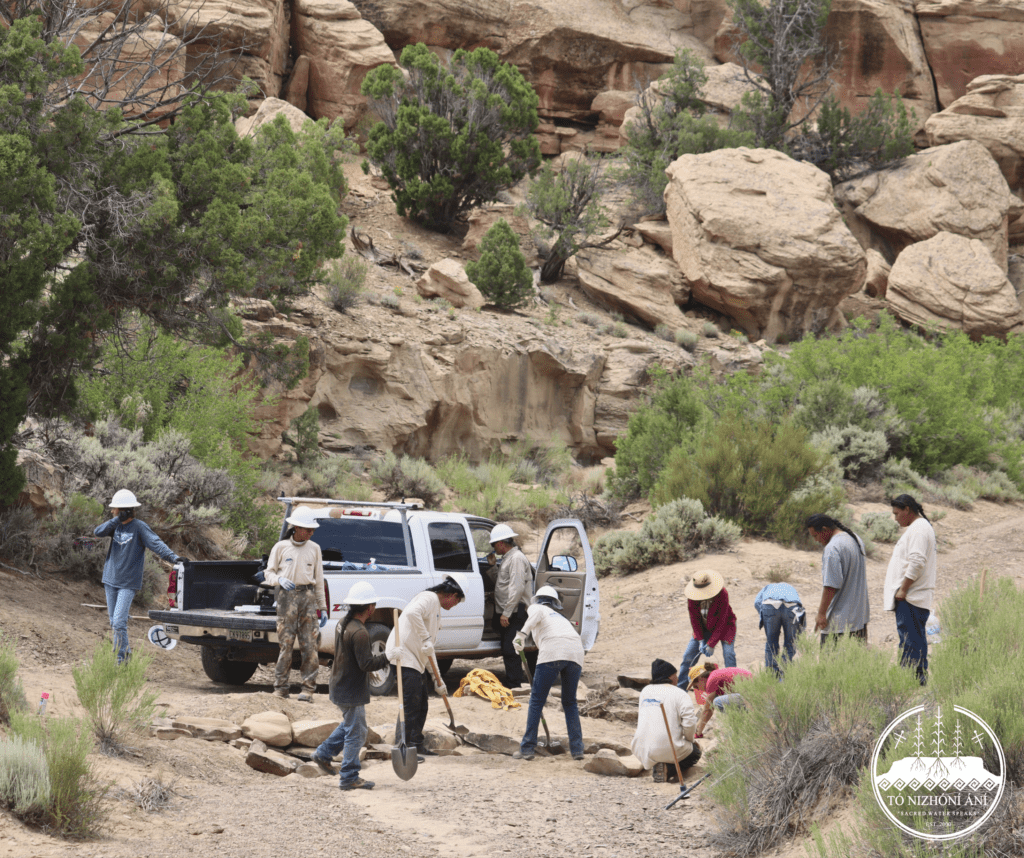Tsiyi’ Tó Watershed Project & Training: 3rd Work Session
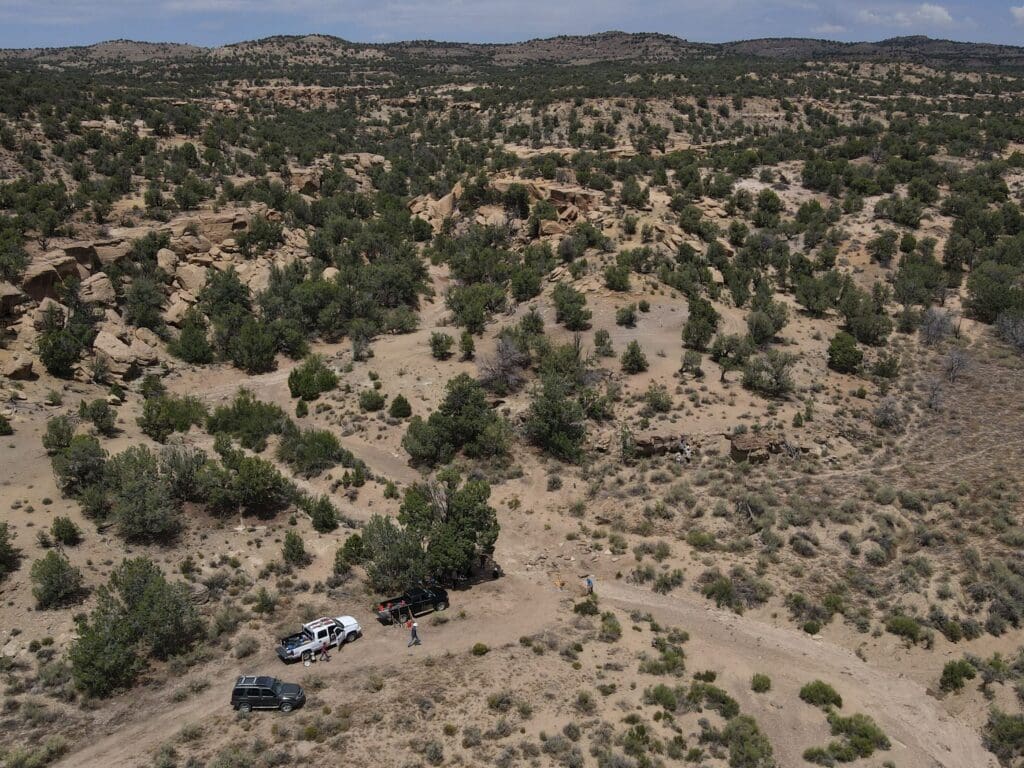
On August 7th and 8th our third work session on the Tsiyi’ Tó Watershed Project and Training had us building examples of erosion grade control structures alongside the 5 mile stretch of Tsiyi’ Tó Wash. We started our two days with driving to the top of the watershed where the spring wash meets the road in a stable section of the channel. Instantly, we knew a storm sometime in July had washed away a section of stream bed where the access road once was. What was once a sand berm is now a scoured hole 30 inches deep in the middle of the wash. We took note of the change and went to make some changes to the Zuni Bowl and rock rundown created in the month prior.
“The work doesn’t get easier; we just learn a bit more each time. We’ve learned, assessed, and staged. We’ve equipped ourselves with the knowledge base to start building and see the work sprout change to the watershed!”
– Andrew Atencia, Tó Nizhóní Ání
For our third work session, our team was joined by Mark Wirtanen from Natural Channel Design Engineering who is their Restoration Specialist and Biologist. Mark examined our work and suggested examples of reinforcement; execution of the plan was instant. More one rock dams were installed above head cuts, the rock rundown included more toe rocks at the bottom of the structure, heavy rocks were carried over with the rock net to build a large one rock dam in a heavily incised section of the valley. Our trainees and crew worked in unison – each rock laid down with thoughtful intention.
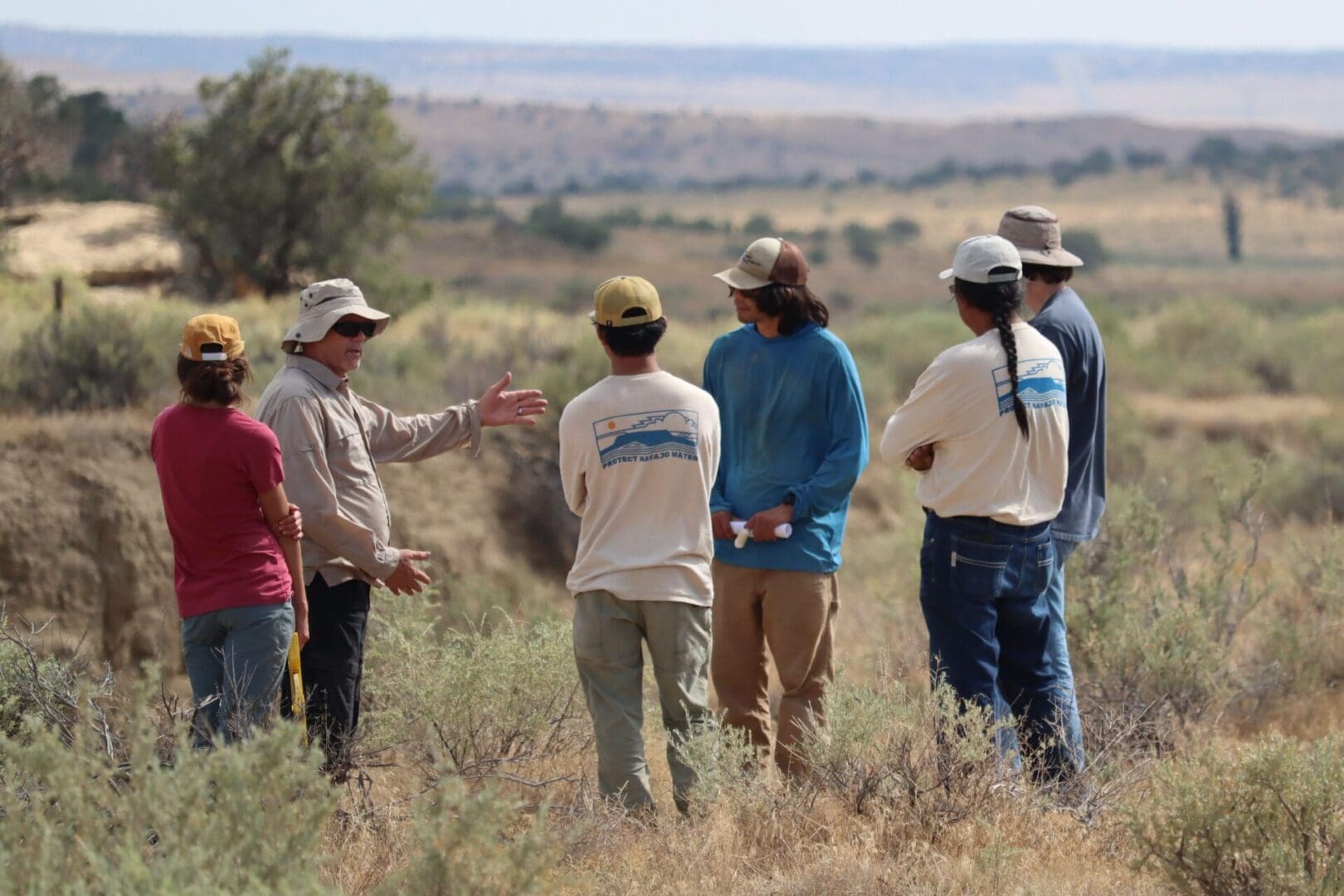
With Natural Channel Designs Engineering assisting in the on-the-fly engineering, trainees and crew stacked boulders with rock nets to create a cross-vane weir to stabilize the road crossing. The cross-vane weir will divert water away from the banks of the stream and into the center, where more flow can be diverted to reduce erosion. Temporary T-post stakes were installed to keep track of aggradation of soil in head cut sections of the valley. Over time, basic monitoring can be done in this way to measure soil accumulation.
Moving forward, each rock structure will have seed pellets embedded within or above it. Placing seed pellets within the rock structures will give them a barrier to grow within since moisture is often trapped inside when flows are introduced. The clay/compost mix will dissolve the seeds, promoting growth where the seeds find purchase.
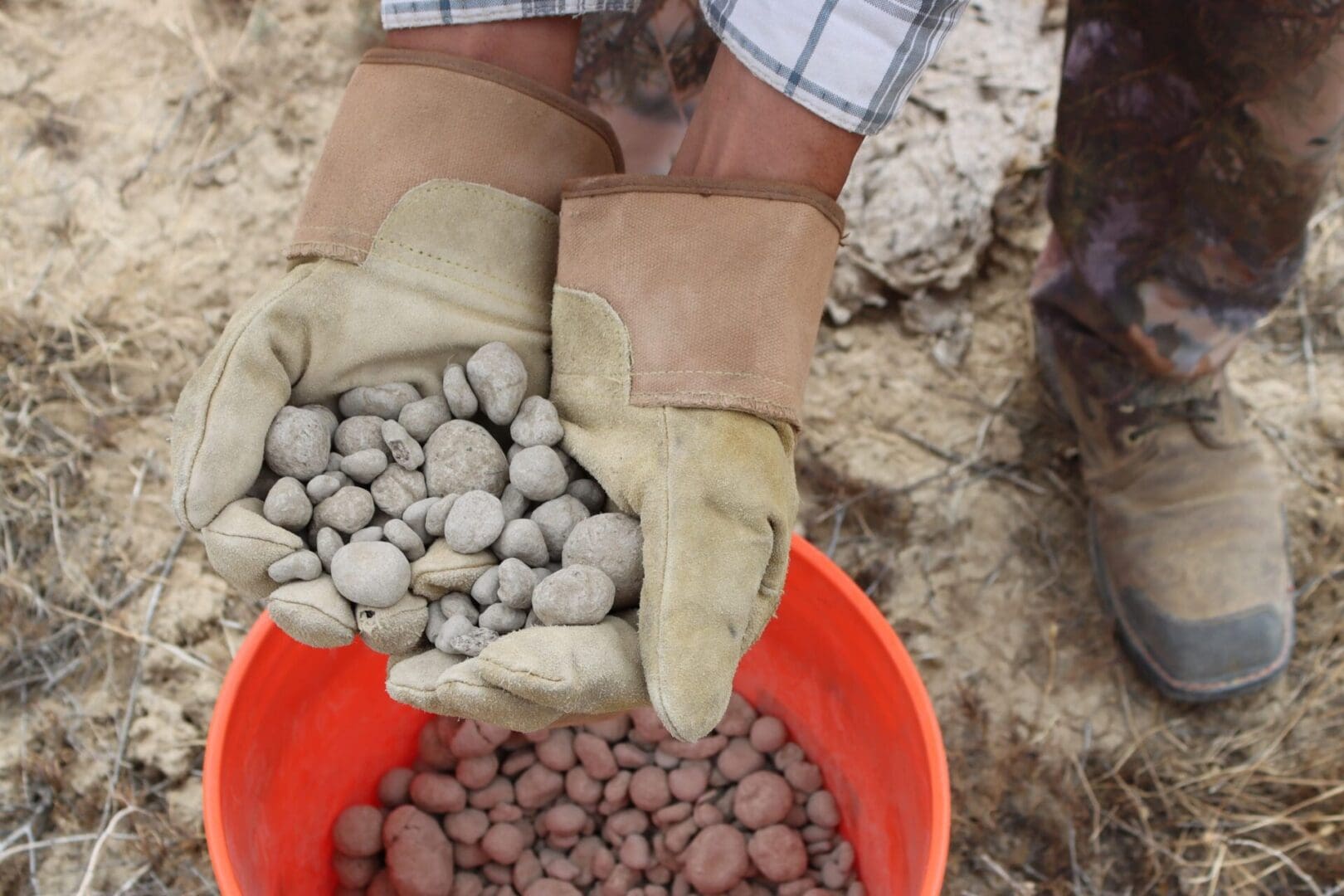
The next day, the trainees built one rock dams, media lunas and more rock rundowns adjacent to a very sandy wash crossing. The fingers of these drainages have the potential to erode into the existing road, and by having these features next to the road, it makes for easier presentation for interested parties to examine progress within the watershed. We concluded the day with installing more one rock dams in a meadow where grass is only growing in the central channel. A secondary, deep channel is forming which is preventing the water table from raising in this particular meadow. More engineering design will be brainstormed to find a viable solution to spreading the grass growth. We need to make more seed pellets, the monsoon storms are dropping significant rainfall, and there’s a lot of time left in the pilot project. We are very happy with the progress made with our trainees and crew!
Thank you to the original landlords and stewards of the land we call Black Mesa for allowing us to use the land as a pilot project example. For more information about this watershed campaign and ways to support this vital work on Black Mesa, contact Andrew@tonizhoniani.org.
